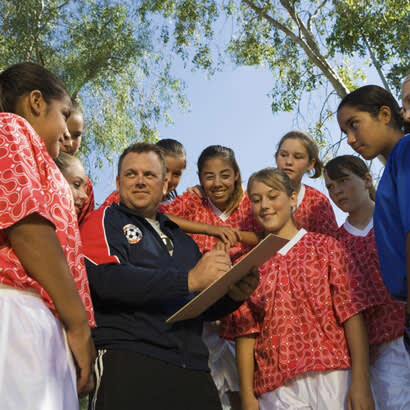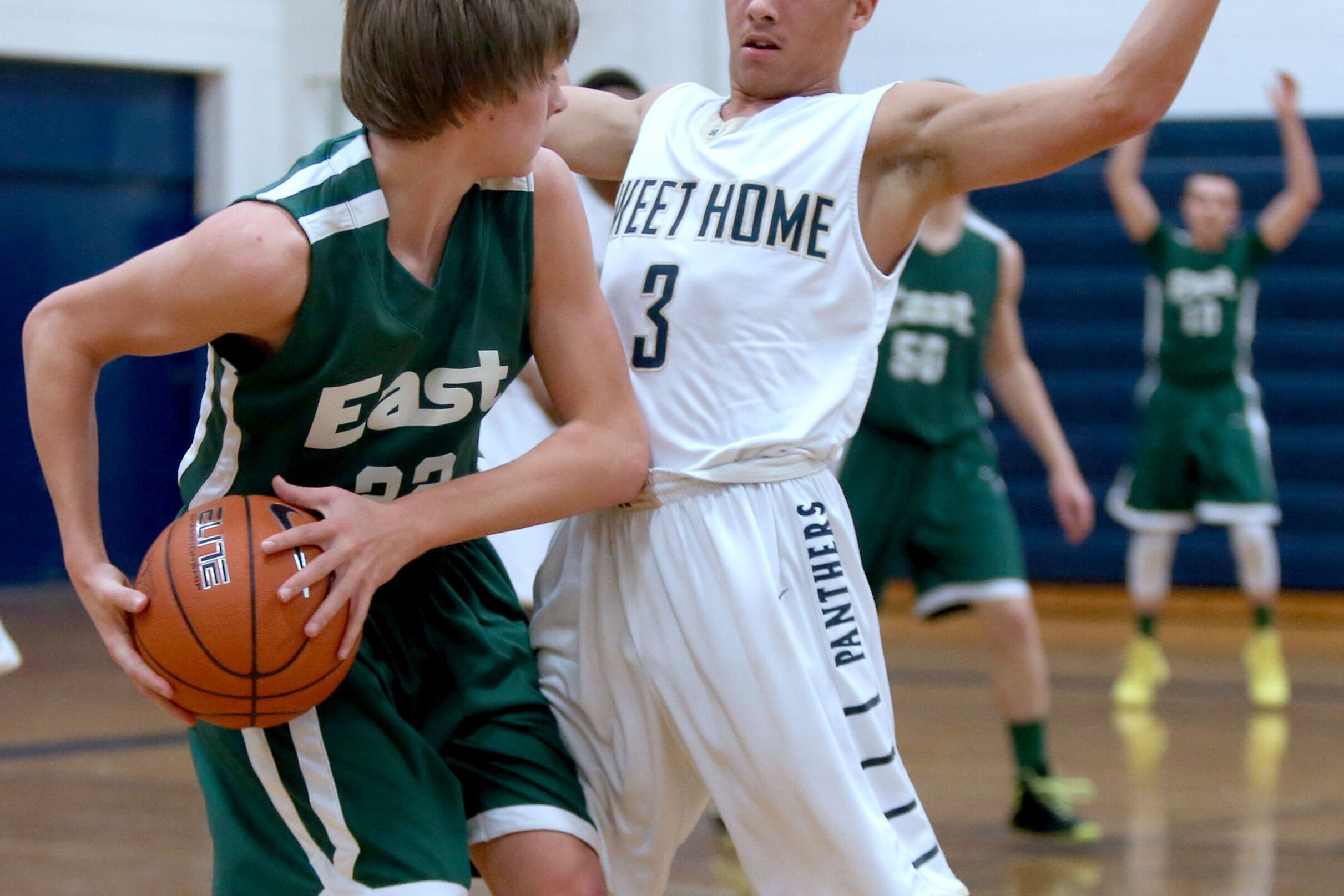How should youth sports providers manage an unprecedented crisis? That’s a key question facing so many organizations trying to survive financially during the pandemic.
On April 15, the Aspen Institute’s Project Play hosted our second webinar to help youth and school sports stakeholders navigate the challenges and opportunities ahead. We focused this time on how leaders in non-profits, travel teams, and parks and recreation departments are tackling issues around funding, expenses and innovation.
We also invited the more than 1,600 participants in the webinar to share their thoughts through live polls. Some key takeaways from the unscientific polls, which were taken by about 1,000 people from youth sports organizations:
30% said the best way to handle refunds for cancelled or postponed sports activities is to offer future credit. Just 18% said it’s best to offer a full refund now.
38% of the respondents said they expect their program to lose up to half of its revenue over the next year.
About one-third of the respondents (35%) said they have already had to furlough or lay off staff since the COVID-19 shutdown began.
Below are highlights from our discussion with three leaders about managing the crisis as a youth sports operator.
Topic No. 1: Youth Sport Funding
Here are the top three things that our leaders say we need to be thinking about in the current landscape, related to funding:
Be transparent with partners about your challenges
Communicate and be flexible, especially with refunds
Use the crisis to diversify funding streams
Brendan Tuohey, Co-Founder and President, PeacePlayers International: “True partnership is really about collaboration. As you work through times of stress, realize your funders can bring lots of things to bear other than money-related contributions. Importantly, it’s also really critical you realize the challenges that partners have for themselves. How can I help them? If you’re in the position of doing it, defer funding for a month or another time period. Work with them to collaborate with other partner organizations. Really step into their shoes. What you’ll see, if you do that right, is you end up coming out of the crisis having even a smarter partnership.”
Lisa Frates, Executive Director, Bethesda (Maryland) Soccer Club: “One of the big things is reminding people how the landscape is put together. It’s not just (participants showing) up at a place to play a game. There are referees, there are leagues, there are governing bodies. Showing them how everything is connected is really important, so they have some sort of insight into decision-making that the organization is going through as we try to weigh options but are also limited by those structures. Sharing that information with parents can be very helpful. It can also reconnect them to that organization.”
Jack Castle, Sports Administrator, Columbus (Ohio) Recreation and Parks Department: “We have a lot less flexibility (on refunds for services that were not obtained) by working with a city and auditors’ offices. I’ve talked to some other cities that have a little bit of flexibility to offer credit for when we do come back if they have space reserved they can use elsewhere. We’ve processed over 5,000 refunds and over $450,000 to date.”
Frates: “For a nonprofit, you want to be responsive to your customers’ needs (for refunds), but if you’re small, you might need to spread things out and be really creative. Look at potentially doing credit or refunds over a two-year period and offering percentage discounts on some of your products, or work to partner with some other organizations to get creative in your programming to offer value to people. … It comes down to what you’re actually capable of doing, looking at some financial modeling and your cash flow, and trying to do the best you can for your clients and your kids and trying to live to fight another day.”
Tuohey: “I was sitting at my desk in 2008 (during the last recession) really seeing no scenario in which our organization existed two months from then because of the challenges around finances. The tendency is to take too much responsibility on your own individual shoulders. I viewed it for the first part of the downturn as this was my fault. If I go tell people of the tough financial position we’re in, they’re going to think less of me and be less likely to help, and actually it was the opposite. We were able to engage our board members and key donors, although it took a while, and have them take ownership with us of this crisis. We changed our whole organizational structure, which made us do a better job of diversifying our funding.”
Poll of webinar participants, n=1048
Poll of webinar participants, n=974
Topic No. 2: Managing Operations
Here are the top three things that our leaders say we need to be thinking about in the current landscape, related to managing organizational operations:
Control costs where possible
Be responsive to staff needs
Collaborate with similarly situated organizations
Castle: “We’re taking this time to reevaluate all of our processes and how often do we things and why we do the things we do. We may normally go to a (field) three times a week to do application on the grass. We’re cutting that back to once. The reality is labor is where the most expense is. Normally we have about 30 part-time staff this time of year (for a baseball/softball facility with 31 diamonds). Right now, we’re running that with three full-time and seven part-time. There have been some cuts made.”
Frates: “We are part of DMV United. What started as a small conversation has blossomed into a partnership with 85 soccer clubs and facilities and event managers within the (D.C., Maryland and Virginia area). We have our own Slack group. We share resources. Why should everyone be incurring costs from a lawyer and accountant when one person can share that information? We may be fiercely competitive on the field, but we also want every kid to have a good experience and make sure they’re safe and keep playing soccer for the love of the game.”
Tuohey: “Be really prepared (in staff meetings). People are on Zoom calls all the time, and as valuable a service as it is, people get really tired of it. So, I think you need the right balance of checking in with (staff) and making it light and fun, having different people lead calls, don’t spend more time than you need to, and really come prepared. … If you don’t have a strong culture coming in, it’s going to be really hard to adapt on the fly. The organizations that not only survive but thrive are the ones that have a strong organizational culture and team and are very collaborative.”
Castle: “I remember the housing crisis of 2008-09. We went through a lot of layoffs. There was a lot of fear. Staffs were really concerned about their lives being turned upside down. People can get angry. I think it’s important as leaders to stand up and communicate with staff along the way, and share those conversations happening behind the doors as much as we can with staff.”
Poll of webinar participants, n=1002
Topic No. 3: Innovation for the Future
Here are the top three things that our leaders say we need to be thinking about in the current landscape, related to innovation for the future:
Reassess your value proposition to the community
Find your opportunity for reinvention
Create low-cost, high-volume programming
Frates: “If you’re so stuck in a way of doing business, there is a good chance you won’t be able to continue because you will not be able to move fast enough. … This has been great for us because it’s really forced us to have dialogue on how we coach and how we connect with young people. Now coaches have to set up a Zoom call and talk face to face. It’s not on a field, it’s not coach-to-player so much as now it’s coaches communicating as humans. The best coaches you have, they’re the ones who were there for you, who listen to you. This pushes us as youth sports providers to be better humans, better mentors and better role models for people.”
Castle: “We may have to look at different types of partnerships. Maybe we’re providing the facility and somebody is providing the program for youth. … I think you’ll see more rec centers without walls, is how we call it. We may not have a center in a neighborhood, but we come into a school with a partnership and provide the programming in their gym and classroom at night.”
Frates: “We’ve seen such a return on investment from our players in virtual training. They love the idea of staying competitive even when they’re not on the field. It’s engaging them at their level, through apps and their phone. It’s not big, long emails. We’re speaking their language more than we were before.”
Tuohey: “One of the challenges is not around lack of available spaces, but a lack of coordination between everyone – the users, the schools, the parks and rec. This presents a real opportunity to get people working on the same page, to use technology to open the access for everybody to different facilities, and an opportunity for a big turnaround. Youth sports has failed the majority of kids in our country, and definitely the kids that we work with in the needy areas. Some travel teams might not exist anymore, but that business will figure out a way. The question is who gets left behind and how do we use public resources to benefit the kids that need it the most? That conversation absolutely needs to be had.”
Do you have a topic that you would like Project Play to explore in future COVID-19 youth sports coverage? Email Jon Solomon at jon.solomon@aspeninstitute.org.





















